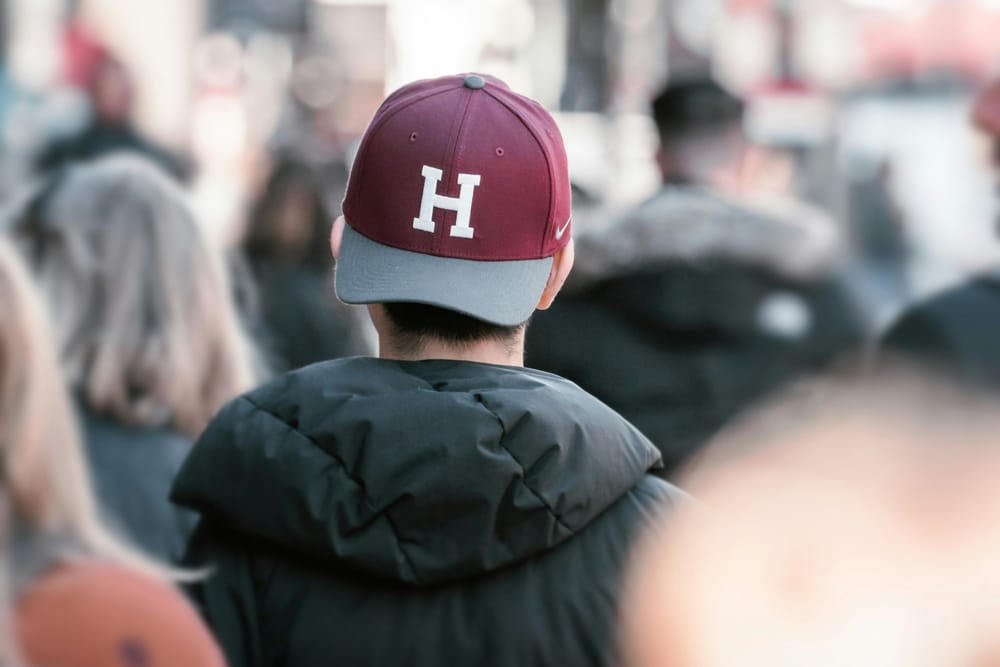When some scholars warned that banning race-based affirmative action policies would diminish the share of Black students accepted to prestigious colleges and universities, they were largely dismissed as hyperbolic. Many were convinced that racism no longer impacted the admissions process. Others argued that maintaining such policies gave some students an unfair advantage. And yet, in the year following the national ban on affirmative action, we see that colorblind admissions produced a racist outcome. Indeed, at Harvard Law School, the number of Black students dropped by more than half following the ban, reaching the lowest level since the 1960s. Students who attend prestigious universities are granted a golden opportunity to earn a college degree and access elite networks that can propel their careers. Thus, restricting who enters the front doors of these institutions limits who the leaders of tomorrow are.
Of course, Black students could skip applying to Ivy League schools altogether and apply to Historically Black Colleges and Universities (HBCUs) and state-run schools, which are more likely to accept their applications. But, doing so wouldn't change the fact that racial disparities persist at elite institutions. And students who earn their degrees there gain access to an alumni network of wealthy, privileged people. The leadership positions in American society are "disproportionately held by graduates from a few highly selective private colleges." So, limiting the rate of Black people admitted to elite universities means fewer of them will have a seat at the table.
Americans who claim they "do not see race" or that "race does not matter" may believe that this is the best path forward. For instance, Jane Elliott, an educator and anti-racism scholar known for her "Blue Eyes/ Brown Eyes Experiment," endorses the notion that we are one race, the human race, and thus, we should not acknowledge our physical differences, that doing so perpetuates racism. Those who complete or reflect upon the exercise are confronted with the injustice of a society that ranks people based on arbitrary physical features. And yet, as we've seen in the aftermath of the Supreme Court banning race-based affirmative action policies, the outcome of not seeing race is that racism persists. The post-racial utopia many imagine when they claim "race doesn't matter" isn't produced by maintaining this worldview. Because ultimately, whether we want to see it or not, racial inequities persist.
Imagine a society where most people value racial diversity and appreciate the benefits that various groups bring. In that case, the increased presence of Black students on college campuses previously attended by mainly White students wouldn't cause such an uproar. They would be welcomed with open arms. Sadly, we live in a society where racial progress has to be weighed against White people's comfort. There's a tipping point that, if crossed by admitting more Black students, for instance, will trigger white flight or resistance to pro-diversity programs. While some people who opposed affirmative action policies were uninformed about institutional racism, others sought to reinforce the racial hierarchy.
While those who claim not to see race may believe they are rising above the fray, the drop in Black students admitted to Harvard Law School following the Supreme Court's ban demonstrates the harmful impact of such a notion. You cannot fix a problem that you cannot see. So, it stands to reason that a society that refuses to consider the unique experiences of its citizens will fail to meet them where they are. Black students are not afforded the same opportunities as White students in their formative years. The Adequacy and Fairness of State School Finance Systems report found that "African American students are twice as likely as White students to be in districts with funding below the estimated adequate levels, and 3.5 times more likely to be" enrolled in "chronically underfunded" school districts. Their research revealed that in every single state, "educational opportunity is unequal."
Why does it matter that Black students are much more likely to attend schools with inadequate resources? Academic funding has been tied to grades, standardized test scores, and graduation rates. One study, for instance, found that increasing spending by $1,000 per student for ten years increased test scores and graduation rates. Without equitable funding for students, the outcomes, such as test scores, will always differ between groups, not as a reflection of students' intellect or capacity to learn, but because of this resource gap.
The intention of using meritocratic measures such as standardized tests and grades is to predict the likelihood of someone succeeding in their career. Yet, Jack Tai, CEO and co-founder of OneClass, suggested in Forbes that grades offer an incomplete picture of whether someone will achieve future success, noting that "grades don't measure leadership or comfort with risk," personality traits associated with business success. Furthermore, Tai added that a grade point average (GPA) can't reveal a student's emotional intelligence or level of interpersonal skills, traits key to working with others. Thus, the overreliance on standardized test scores and grades in college admissions decisions perpetuates racial and class inequality. The bleak outcome at Harvard Law School should dispel the notion that affirmative action policies were simply window dressing as the rate of Black students admitted dropped precipitously in their absence.
During the 1970s, Harvard University began to implement affirmative action policies voluntarily. While they were not a perfect remedy to challenging the racism Black students and other marginalized groups experience, they were a powerful tool that extended opportunities to students routinely overlooked. And in their absence, we're confronted with the cold, hard reality that racism persists in this country. That inaction does not provide us with a neutral outcome. On the contrary, despite many arguing that removing affirmative action policies would make the admissions process more fair, the rate of Black students admitted to Harvard Law School has dropped by more than half, revealing a racist outcome.
